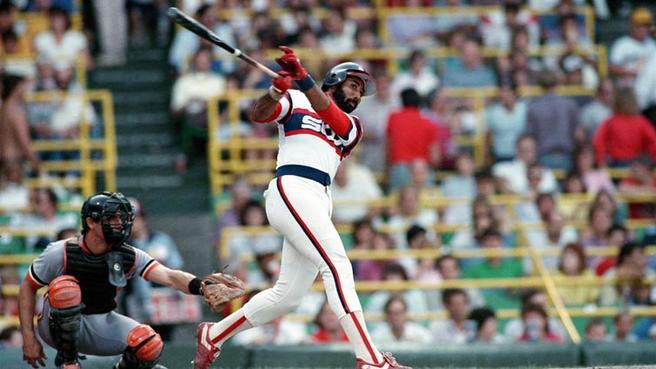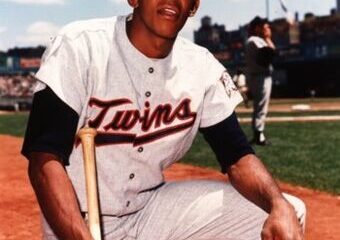The Hall of Fame Index: Who is the least qualified right fielder in the Hall of Fame?

We can put Veterans Committee selections into three categories. There are those from the 19th century. Most of those were warranted because the BBWAA were not in a position to select those players because they had not seen them play. Of course, there were some errors in those categories, but they were few and far between. The second category were guys that the BBWAA wrongfully overlooked. Why they were overlooked is anyone’s best guess. It often depended on the individual player.
The third category are what we call the mistakes. Sometimes it was cronyism and sometimes it was just a lack of information. Then, there’s Harold Baines. He was selected this past season. You really can’t point to cronyism and you certainly can’t say it was a lack of information. It was just a huge mistake. It spurred me on to finally compile the second book (The Hall of Fame Index Part II).
The question of whether Baines is a Hall of Famer is the wrong question. Was he the most fit for the Hall of Fame? It really isn’t particularly close. Yes, he has 1628 RBI. He had 2866 hits. He hit 384 home runs. These are all true. What exactly do they mean? Usually, the course of this argument goes that he has more hits, home runs, and RBI than people in the Hall of Fame. Great. What does that even mean? Well, let’s find out.
Career Value
| BWAR | FWAR | WS/5 | Total | |
| Sam Crawford | 75.3 | 71.1 | 89.2 | 235.6 |
| Enos Slaughter | 57.0 | 51.4 | 64.6 | 179.0 |
| Willie Keeler | 54.3 | 55.7 | 66.6 | 176.6 |
| Harry Hooper | 53.3 | 52.3 | 64.2 | 169.8 |
| Sam Rice | 53.4 | 50.3 | 65.4 | 169.1 |
| Kiki Cuyler | 47.0 | 52.9 | 58.4 | 158.3 |
| King Kelly | 46.0 | 45.1 | 61.0 | 152.1 |
| Harold Baines | 38.7 | 38.4 | 61.4 | 138.5 |
| Chuck Klein | 46.0 | 42.8 | 47.6 | 136.4 |
| Sam Thompson | 44.4 | 44.1 | 47.2 | 135.7 |
| Ross Youngs | 32.3 | 36.2 | 41.2 | 109.7 |
I’ve already tipped my hand. Here it appears as if Baines is not the least qualified right fielder in the Hall of Fame. This is why we have a career and peak value element. The career value element doesn’t tell you how long it took the player to amass that value. Youngs died young and only got in a decade’s worth of value. Klein did not die young, but had a brief career as well. Baines played for 21 years. So, it is fair to ask how good he really was for any part of that.
Of course, that is why we look at peak value, offensive statistics, and fielding statistics. It’s also why we look at the BWAR MVP points. The BBWAA agreed with the assessment. They only gave Baines two top ten finishes in the MVP voting (9th and 10th) and never got more than 6.1 percent of the Hall of Fame vote. Yes, he has counting numbers, but was he ever really great?
Youngs appears like the main competition for the bottom spot in the right field universe. He has a top five finish in the MVP to his credit. He had two seasons with more than five WAR. Baines has none. Of course, all of this will come out with the subsequent numbers.
Peak Value
| BWAR | FWAR | WS/5 | Total | Index | |
| Crawford | 50.6 | 47.3 | 59.2 | 151.1 | 392.7 |
| Keeler | 45.2 | 47.4 | 48.6 | 141.2 | 317.8 |
| Slaughter | 43.6 | 40.0 | 47.2 | 130.8 | 309.8 |
| Cuyler | 39.4 | 44.5 | 44.0 | 127.9 | 286.2 |
| Hooper | 36.8 | 35.7 | 42.6 | 115.1 | 284.9 |
| Rice | 36.6 | 34.4 | 43.4 | 114.4 | 283.5 |
| Kelly | 36.3 | 36.5 | 48.2 | 121.0 | 273.1 |
| Klein | 46.3 | 43.3 | 42.6 | 132.2 | 268.6 |
| Thompson | 39.3 | 39.1 | 42.0 | 120.4 | 256.1 |
| Baines | 24.9 | 24.6 | 34.0 | 83.5 | 222.0 |
| Youngs | 32.3 | 36.2 | 41.2 | 109.7 | 219.4 |
It appears as if Youngs would still be the lowest, but check out the peak value numbers. How can someone that averages fewer than three wins a season during his prime really be that valuable? Yes, there are numbers, but we have to ask ourselves some very basic questions. Was Baines ever the best right fielder in the game? Was he ever the best player in the league. Hell, was he even the best player on his team?
In 1982 one other White Sox had more WAR and another player virtually the same. In 1983, four regulars on the White Sox had more WAR. He had the most WAR in 1984. He was also second in 1985. He never got any MVP votes outside of those four seasons. So, yes, he was the best player on his team exactly once. I’m overwhelmed.
Offensive Numbers
| OPS+ | Rbaser | OW% | wOBA | |
| Thompson | 147 | -19 | .733 | .409 |
| Crawford | 144 | -3 | .738 | .387 |
| Klein | 137 | 3 | .723 | .411 |
| Kelly | 133 | 1 | .699 | .375 |
| Youngs | 130 | -2 | .668 | .394 |
| Keeler | 127 | -8 | .679 | .383 |
| Cuyler | 125 | 24 | .652 | .393 |
| Slaughter | 124 | 11 | .656 | .384 |
| Baines | 121 | -10 | .585 | .358 |
| Hooper | 114 | 8 | .593 | .363 |
| Rice | 112 | 19 | .603 | .372 |
Is Baines the worst offensive player in the bunch? Weill, that depends on which number you pay most attention to. Offensive winning percentage and wOBA would say yes. OPS+ would indicate not. These numbers are dreadfully important. They are aggregate of what the player did over the course of their entire career. We know Baines served as a designated hitter for much of his career, so he didn’t add a ton of defensive value.
Meanwhile, guys like Thomson, Youngs, and Klein jump up the board. It puts Youngs place in history in a little different light. No, he shouldn’t have been elected to the Hall of Fame, but he might not be the least fit in spite of what the index says. The index was only meant to be a guide. For those buying the book, you will see us go through these tests one by one at every position.
Fielding Numbers
| Rfield | DWAR | TZOF | DWS/5 | |
| Hooper | 77 | -4.4 | 77 | 10.6 |
| Rice | 56 | -4.0 | 56 | 10.8 |
| Keeler | 30 | -9.9 | 36 | 9.5 |
| Slaughter | 20 | -8.2 | 20 | 9.9 |
| Kelly | 18 | -7.4 | 15 | 10.2 |
| Youngs | 15 | -4.7 | 16 | 5.1 |
| Cuyler | 14 | -5.6 | 14 | 9.5 |
| Thompson | 11 | -7.2 | 11 | 5.6 |
| Baines | -12 | -19.5 | -13 | 4.7 |
| Crawford | -36 | =18.1 | -30 | 9.4 |
| Klein | -40 | -11.9 | -40 | 5.9 |
Don’t drink, don’t smoke, what do you do? In all seriousness, we can certainly overstate the value of fielding. There is literally nearly six wins difference between the most valuable fielder and least valuable fielder. DWAR creates a spread that doesn’t seem to manifest itself in overall WAR, but it is just one more nail in the Baines coffin. He played more than 1600 games as a designated hitter, so the value simply isn’t there.
In point of fact, he wasn’t absolutely horrible as a fielder. He just wasn’t particularly good. Furthermore, had there not been the DH option you have to wonder if he would have lasted more than 20 seasons as a position player. All that being said, right field is not a valuable enough position to overcome shaky offense or limit someone for lack of defense. The most significant test will likely be the BWAR MVP test.
BWAR MVP Test
| Top 10 | Top 5 | MVP | Points | |
| Crawford | 4 | 6 | 0 | 42 |
| Klein | 3 | 1 | 1 | 24 |
| Thompson | 3 | 3 | 0 | 24 |
| Keeler | 6 | 1 | 0 | 23 |
| Slaughter | 5 | 1 | 0 | 20 |
| Kelly | 1 | 3 | 0 | 18 |
| Cuyler | 4 | 1 | 0 | 17 |
| Youngs | 2 | 2 | 0 | 16 |
| Hooper | 2 | 1 | 0 | 11 |
| Rice | 3 | 0 | 0 | 9 |
| Baines | 0 | 0 | 0 | 0 |
You’ll have to look pretty hard to find another Hall of Famer that comes up goose eggs in this category, If you don’t believe BWAR lets go with win shares. !984 was the high water mark for Baines as he reached 4.8 BWAR and 24 win shares (4.8 WS/5). That would have placed him in the five way tie for 15th in the American League that season. He was first amongst White Sox that season.
I’m not a big fan of the selections of Chuck Klein or Ross Youngs, but at least you can claim they were amongst the best players in the league at some point in their brief careers. Baines’ selection is the triumph of counting numbers and accumulation. He never scored 100 or more runs in a season, drove in 100 runs or more only three times, and created 100 or more runs only once. So, he played forever. He was always solid, but never really good. I guess that gets you into the Hall of Fame these days.


